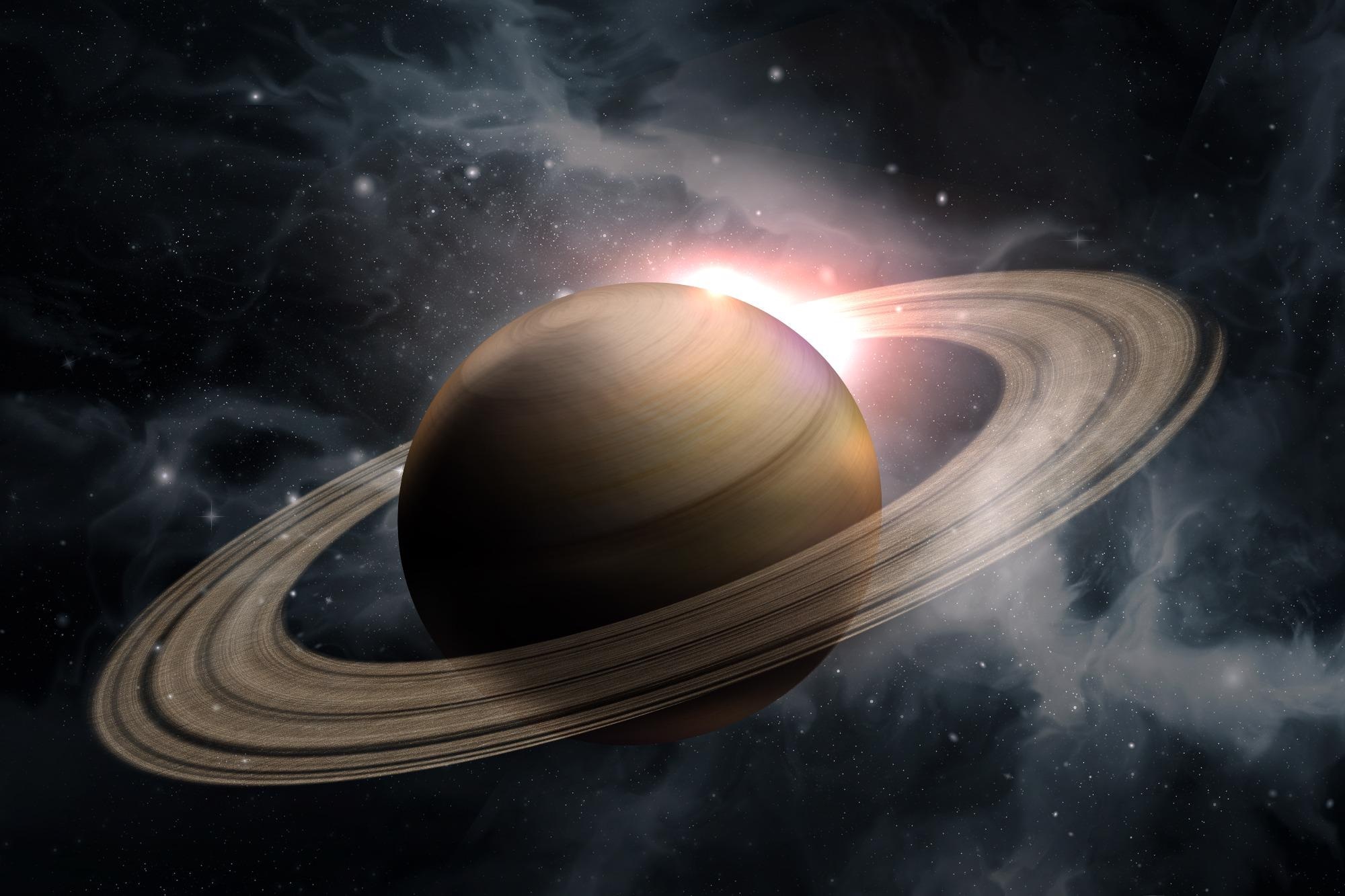
Image Credit: Shutterstock / Ezume Images
Simulations of the interior of Saturn have revealed a connection between the planet’s magnetic field and its thick shell of helium rain.
In 2017 after two decades in space, NASA’s Cassini probe ended the final portion of its mission by orbiting Saturn — the sixth planet from the Sun — closer and closer until its operators finally plunged the probe into the planet.
This final mission for Cassini — fittingly named the Grande Finale — whose rocket fuel had been long exhausted, resulted in the collection of detailed observations of Saturn’s magnetic field and of the atmosphere that the probe plunged through to meet its demise.
This data revealed that the planet’s magnetosphere has some rather unique and peculiar features. But, perhaps even more excitingly, this data has also given astronomers and planetary scientists a way to glimpse deep below into Saturn’s interior and model the processes that occur there.
Armed with data from the Cassini Grande Finale and observations of these unique magnetic field features, researchers from Johns Hopkins University, Baltimore, US, have created computer simulations of the dynamo-like processes that occur within the gas giant which create that magnetic field. These simulations suggest that Saturn’s thick layer of helium rain could be influencing its magnetic field.
Sabine Stanley, a Bloomberg Distinguished Professor at Johns Hopkins in the Department of Earth & Planetary Sciences and the Space Exploration Sector of the Applied Physics Lab, explains the significance of the team’s models, “By studying how Saturn formed and how it evolved over time, we can learn a lot about the formation of other planets similar to Saturn within our own solar system, as well as beyond it.”
Alongside Chi Yan, a Johns Hopkins Ph.D. candidate, Stanley is the author of a paper¹ published in AGU Advances that details the team’s findings.
How Saturn Stands Out
The magnetic field of Saturn — the second-largest planet in the solar system — differs from similar fields found elsewhere in our planetary system. This is because its magnetic field seems to be near perfectly symmetrical around its axis of rotation, or axisymmetric.
This symmetry is something that presents a problem to theories of how planet’s interiors generate magnetic fields. It’s also problematic because it is difficult to explain why no other planets in the solar system with active dynamos — apart from perhaps Mercury — show anywhere near this level of symmetry, all possessing much ‘messier’ magnetic fields.
Of course, this suggests that there might be something happening on Saturn that isn’t going on either within the interiors or upon the surfaces of those other planets.
There is one element on Saturn that differs from anything found on other planets; its outer atmosphere is low in helium. This is because liquid helium is raining from the atmosphere to the planet’s interior layers and core, a process that also occurs on Saturn’s fellow gas giant Jupiter — which is much hotter.
This is significant because this thick layer of rain is found at the top of the dynamo region. Thus, the Johns Hopkins duo set about finding out if it could be this feature of Saturn that gives rise to the unique shape of its magnetic field.
Saturn’s Helium Rains
Astronomers first began to suspect that Saturn may possess helium rains when they realized that it was about 50% brighter than a cooling planet should be. One way of explaining this is through the behavior of helium in its gaseous envelope.
As temperatures rise in Saturn’s interior layers gases in the atmosphere like helium and hydrogen turn to liquids. In the lower atmosphere at temperatures high enough, helium falls from this dissolved mixture forming droplets of rain that fall towards the gas giant’s core releasing gravitational potential energy and brighten the planet.
Yan and Stanley found that a relatively thick stable layer of helium rain extending out to around 70% of Saturn’s radius could reproduce the observed features of the planet’s magnetic field, with more heat emitted at the top of the layer than at the mid — equatorial — region.
One thing we discovered was how sensitive the model was to very specific things like temperature. And that means we have a really interesting probe of Saturn’s deep interior as far as 20,000 kilometers down. It’s a kind of X-ray vision.
Sabine Stanley, a Bloomberg Distinguished Professor, the Department of Earth & Planetary Sciences and the Space Exploration Sector of the Applied Physics Lab, Johns Hopkins University
The next step for the team’s research could be further investigation of a small degree of non-symmetry around the rotational axis near the planet’s two poles that their models showed.
“Even though the observations we have from Saturn look perfectly symmetrical, in our computer simulations we can fully interrogate the field,” says Stanley. “Direct observation at the poles would be necessary to confirm it.”
In addition to this, the duo believes that deeper investigation of this phenomenon could also help planetary scientists answer another long-standing puzzle surrounding Saturn.
The finding could have implications for understanding another problem that has vexed scientists for decades: how to measure the rate at which Saturn rotates, or, in other words, the length of a day on the planet.
Professor Sabine Stanley
References
1. Yan. C., Stanley. S., [2021], ‘Recipe for a Saturn‐Like Dynamo,’ AGU Advances, [https://doi.org/10.1029/2020AV000318]
Disclaimer: The views expressed here are those of the author expressed in their private capacity and do not necessarily represent the views of AZoM.com Limited T/A AZoNetwork the owner and operator of this website. This disclaimer forms part of the Terms and conditions of use of this website.